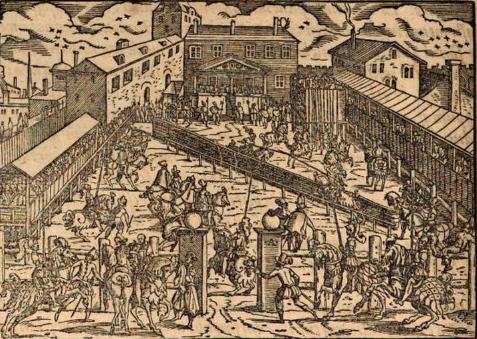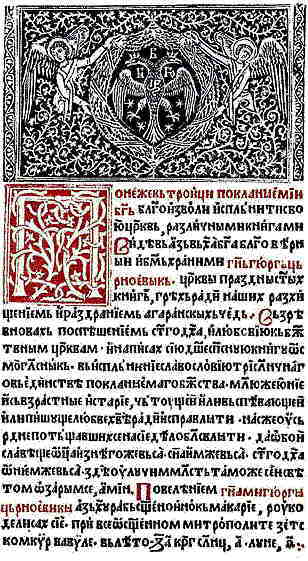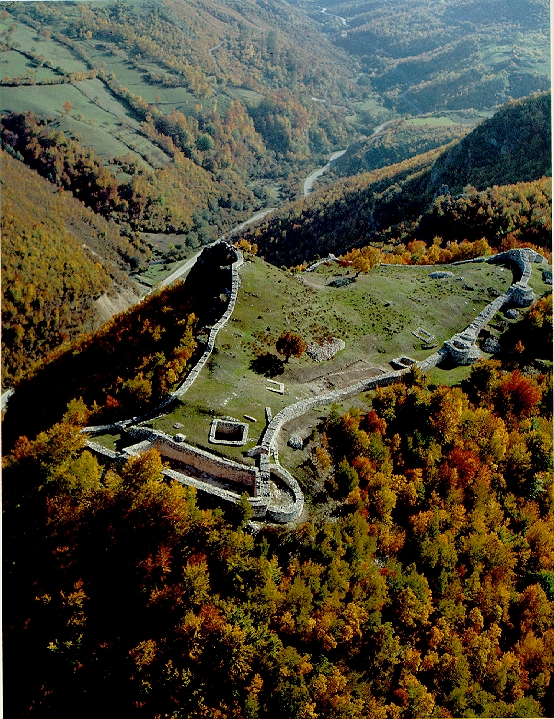|
Sanjak Of Scutari
The Sanjak of Scutari or Sanjak of Shkodra (; ; or ''İşkodra Sancağı'') was one of the sanjaks of the Ottoman Empire. It was established after the Ottoman Empire acquired Shkodra after the siege of Shkodra in 1478–9. It was part of the Eyalet of Rumelia until 1867, when it became a part, together with the Sanjak of Skopje, of the newly established Scutari Vilayet. In 1912 and the beginning of 1913 it was occupied by members of the Balkan League during the First Balkan War. In 1914 the territory of Sanjak of Scutari became a part of the Principality of Albania, established on the basis of the peace contract signed during the London Conference in 1913. History Background and formation With short interruptions, the territory of northern Albania, including what would become the Sanjak of Scutari, remained under the rule of the Serbian feudal lords of the state of Duklja and Raška for centuries. After the fall of the Serbian Empire in the mid-14th century, loca ... [...More Info...] [...Related Items...] OR: [Wikipedia] [Google] [Baidu] |
Sanjak
A sanjak or sancak (, , "flag, banner") was an administrative division of the Ottoman Empire. The Ottomans also sometimes called the sanjak a liva (, ) from the name's calque in Arabic and Persian. Banners were a common organization of nomadic groups on the Eurasian Steppe including the early Turks, Mongols, and Manchus and were used as the name for the initial first-level territorial divisions at the formation of the Ottoman Empire. Upon the empire's expansion and the establishment of eyalets as larger provinces, sanjaks were used as the second-level administrative divisions. They continued in this purpose after the eyalets were replaced by vilayets during the Tanzimat reforms of the 19th century. Sanjaks were typically headed by a bey or sanjakbey. The Tanzimat reforms initially placed some sanjaks under kaymakams and others under mutasarrifs; a sanjak under a mutasarrif was known as a mutasarriflik. The districts of each sanjak were known as kazas. These were ini ... [...More Info...] [...Related Items...] OR: [Wikipedia] [Google] [Baidu] |
First Balkan War
The First Balkan War lasted from October 1912 to May 1913 and involved actions of the Balkan League (the Kingdoms of Kingdom of Bulgaria, Bulgaria, Kingdom of Serbia, Serbia, Kingdom of Greece, Greece and Kingdom of Montenegro, Montenegro) against the Ottoman Empire. The Balkan states' combined armies overcame the initially numerically inferior (significantly superior by the end of the conflict) and strategically disadvantaged Ottoman armies, achieving rapid success. The war was a comprehensive and unmitigated disaster for the Ottomans, who lost 83% of their European territories and 69% of their European population.''Balkan Savaşları ve Balkan Savaşları'nda Bulgaristan'' Süleyman Uslu As a result of the war, the League captured and partitioned al ... [...More Info...] [...Related Items...] OR: [Wikipedia] [Google] [Baidu] |
Skenderbeg Crnojević
Gjergj Kastrioti (17 January 1468), commonly known as Skanderbeg, was an Albanian feudal lord and military commander who led a rebellion against the Ottoman Empire in what is today Albania, North Macedonia, Greece, Kosovo, Montenegro, and Serbia. A member of the noble Kastrioti family, Skanderbeg was sent as a hostage to the Ottoman court. He graduated from the Enderun School and entered the service of the Ottoman sultan Murad II () for the next twenty years. His rise through the ranks culminated in his appointment as of the Sanjak of Dibra in 1440. During the Battle of Nish in 1443, he deserted the Ottomans and became the ruler of Krujë and nearby areas extending from Petrelë to Modrič. In March 1444, he established the League of Lezhë, with support from local noblemen, and unified the Albanian principalities. In 1451, through the Treaty of Gaeta, Skanderbeg recognized ' the sovereignty of the Kingdom of Naples over Albania, ensuring a protective alliance, altho ... [...More Info...] [...Related Items...] OR: [Wikipedia] [Google] [Baidu] |
Sanjak Of Montenegro
The Sanjak of Montenegro ( Montenegrin and sr-cyr, Санџак Црне Горе, Sandžak Crne Gore; , literally Sanjak of the Black Mountain) was a province (sanjak) of the Ottoman Empire in the Balkan Peninsula roughly corresponding to modern Montenegro. It was created in 1514 from the borders of the former Zeta, ruled by the Crnojevići, which had earlier been organized into the Sanjak of Scutari in 1499. History The greater part of the Zetan principality lost its status as an independent state, becoming a vassal state of the Ottoman Empire, until it was added to the Ottoman administrative unit of Sanjak of Scutari in 1499. In 1514 this territory was separated from the Sanjak of Scutari and established as a separate Sanjak of Montenegro, under the rule of Skenderbeg Crnojević. In 1523, the ''resm-i filori'' of Montenegro (Karadağ), which had the status of '' hass'', was made up of 33 akçe in poll-tax, a 20 akçe İspençe and 2 akçe for the collector. When Skenderbeg ... [...More Info...] [...Related Items...] OR: [Wikipedia] [Google] [Baidu] |
Grbalj
Grbalj ( sr-Cyrl, Грбаљ), denotes a historic, rural region of the Montenegrin littoral, and a parish located between town of Budva Budva (Cyrillic script, Cyrillic: Будва, or ) is a town in the Coastal Montenegro, Coastal region of Montenegro. It had 27,445 inhabitants as of 2023, and is the centre of Budva Municipality. The coastal area around Budva, called the Budv ... and the Luštica peninsula, Bay of Kotor in coastal Montenegro. Most of the region now lies within Kotor Municipality. It is a fertile region defined by the Lovćen Mountain to the east, and terminating at the low western hills overlooking the Adriatic Sea to its west. Etymology Grbalj was derived from Gripuli or Grupuli, a derivation of Acruvium, the ancient Ancient Rome, Roman city located in this vicinity (considered most likely at present-day Kotor, Montenegro). Geography The east side of the field, collectively referred to as Upper Grbalj, encompasses ten settlements. Lower Grbalj consists o ... [...More Info...] [...Related Items...] OR: [Wikipedia] [Google] [Baidu] |
Stefan II Crnojević
Stefan Crnojević ( sr-cyrl, Стефан Црнојевић, 1469–1499), or Stephen II was a nominal ruler of the Principality of Zeta between 1496 and 1499. Conspiring with Ottomans against Đurađ Until 1496, the ruler of Zeta had been Stefan's older brother Đurađ Crnojević, who maintained frequent correspondence with other Christian feudal states with intention to establish an anti-Ottoman coalition. When his brother Stefan betrayed him to the Ottomans in 1496, Đurađ proposed to accept Ottoman suzerainty under Feriz Beg, if they accepted to recognize him as governor in Zeta. Feriz Beg refused the proposal and invited Đurađ to either come to Scutari to clarify his anti-Ottoman activities, or to flee Zeta. When Feriz Beg attacked Zeta with strong forces in 1496, Đurađ decided to flee to the Republic of Venice. Lord of Zeta Stefan remained in Zeta hoping that the Ottomans would accept his suzerainty, but they only used him in order to easier gain control over his ... [...More Info...] [...Related Items...] OR: [Wikipedia] [Google] [Baidu] |
Zeta Under The Crnojevići
Zeta ( sr-cyrl, Зета) was one of the Serbian medieval polities that existed between 1371 and 1496, whose territory encompassed parts of present-day Montenegro and northern Albania. The Crnojević noble family ruled the Principality of Zeta from 1451 until 1496. Background In 1421, before his death and under the influence of his mother Jelena, Balša III passed the rule of Zeta to Serbian Despot Stefan Lazarević. Despot Stefan fought the Republic of Venice and regained Bar in mid-1423, and in 1424 his nephew Đurađ Branković regained Drivast and Ulcinium (Ulcinj). With the death of Despot Stefan in 1427, his nephew Đurađ inherited the rule of Serbia. History Ascent to power The most important roles in establishing this family's rule in Zeta were played by Stefan I Crnojević (1451–1465) and his son Ivan (1465–1490). Ivan's son Đurađ Crnojević (1490–1496) was the last ruler from this dynasty. Stefan Stefan I Crnojević consolidated his power in Zeta and ru ... [...More Info...] [...Related Items...] OR: [Wikipedia] [Google] [Baidu] |
Đurađ Crnojević
Đurađ Crnojević ( sr-cyr, Ђурађ Црноjeвић, ; d. 1514) was the last Serbian medieval Zeta under the Crnojevići, Lord of ZetaSlijepčević 1974, p. 43: "Према Карлу Хопфу и Балшићи и Црнојевићи »припадају без спора српскоме племену». between 1490 and 1496, from the Crnojević dynasty. The son of Ivan Crnojević and the Albanians, Albanian noblewoman Goisava Arianiti family, Arianiti, he was the founder of the Printing House of Crnojevići, first Serbian printing house. Crnojević styled himself ''"Duke of Zeta"''. He was well known by his great education, knowledge of astronomy, geometry and other sciences. During his short-term reign he became famous for making efforts to spread the cultural heritage rather than for his political successes. The Ottoman Turks, Ottomans made him leave Zeta in 1496. His brother Stefan II Crnojević, Stefan inherited his position of the Lord of Zeta. In 1497 Venetians i ... [...More Info...] [...Related Items...] OR: [Wikipedia] [Google] [Baidu] |
Firuz Bey
Feriz Beg ( 1495–1515) was a 15th and 16th-century Ottoman military officer, Sanjak-bey of the Sanjak of Scutari and Sanjak of Bosnia. Origin Feriz Beg belonged to the Mihaloğlu family, a noted Byzantine family which converted to Islam and was important in the early Ottoman conquests of the Balkans. Career Bosnia From 1495 to 1496, Feriz was sanjak-beg of the Sanjak of Bosnia. His predecessor Jahja Pasha built a mosque in Sarajevo during his reign in Bosnia (1494–95) but did not provide a water supply to it. According to a legend, he asked his successor, Firuz Bey to do so from Sedrenik to the Jahja Pasha mosque. Firuz Bey did so and also built a public tap in honour of his predecessor. Scutari Feriz Beg held the position of Sanjak-bey of the Sanjak of Scutari from 1496 to 1502. Đurađ Crnojević who controlled the neighboring Principality of Zeta maintained frequent correspondence with other Christian feudal states with the intention of establishing an anti-Ottoman c ... [...More Info...] [...Related Items...] OR: [Wikipedia] [Google] [Baidu] |
SDUK - Turkey I
The Society for the Diffusion of Useful Knowledge (SDUK) was founded in London in 1826, mainly at the instigation of Whig MP Henry Brougham, with the object of publishing information to people who were unable to obtain a formal education or who preferred self-education. It was a largely Whig organisation, and published inexpensive texts intended to adapt scientific and similarly high-minded material for the rapidly-expanding reading public over twenty years until it was disbanded in 1846. Origins Henry Brougham considered that mass education was an essential prerequisite for political reform. In October 1824 he contributed an article on "scientific education of the people" to the Whig ''Edinburgh Review'', in which he argued that popular education would be greatly enhanced by the encouragement of cheap publications to complement the numerous recently founded provincial mechanics' institutes. The following year a version of this article was issued as a pamphlet entitled ''Pra ... [...More Info...] [...Related Items...] OR: [Wikipedia] [Google] [Baidu] |
Balšić Noble Family
The House of Balšić ( sr-Cyrl, Балшићи; ), or Balsha, were a noble family that ruled " Zeta and the coastlands" (current-day southern Montenegro and northern Albania), from 1362 to 1421, during and after the fall of the Serbian Empire. Balša, the founder, was a petty nobleman who held only one village during the rule of Emperor Dušan the Mighty (r. 1331–1355), and only after the death of the emperor, his three sons gained power in Lower Zeta after acquiring the lands of ''gospodin'' Žarko (fl. 1336–1360) under unclear circumstances, and they then expanded into Upper Zeta by murdering ''voivode'' and ''čelnik'' Đuraš Ilijić (r. 1326–1362†). Nevertheless, they were acknowledged as ''oblastni gospodari'' of Zeta in edicts of Emperor Uroš the Weak (r. 1355–1371). After the death of Uroš (1371), the family feuded with the Mrnjavčevići, who controlled Macedonia. When the last lord of the main branch of the family, Balša III died in 1421 without an hei ... [...More Info...] [...Related Items...] OR: [Wikipedia] [Google] [Baidu] |
Grand Principality Of Serbia
The Grand Principality of Serbia ( sr-Cyrl-Latn, Великожупанска Србија, Velikožupanska Srbija, separator=" / "), also known by the anachronistic exonym Raška (region), Rascia ( sr-Cyrl-Latn, Рашка, Raška, separator=" / ", link=no), was a medieval Serbs, Serbian state that existed from the second half of the 11th century up until 1217, when it was transformed into the Kingdom of Serbia (1217–1346), Kingdom of Serbia. After the Grand Principality of Serbia emerged, it gradually expanded during the 12th century, encompassing various neighbouring regions, including territories of Raška (region), Raška ( sr-Cyrl, Рашка; ), modern Montenegro, Herzegovina, and southern Dalmatia. It was founded by Grand Prince Vukan, Grand Prince of Serbia, Vukan, who initially served as the regional governor of the principality ( 1082), appointed by King Constantine Bodin. During the Byzantine–Serbian wars ( 1090), Vukan gained prominence and became a self-governing ... [...More Info...] [...Related Items...] OR: [Wikipedia] [Google] [Baidu] |







